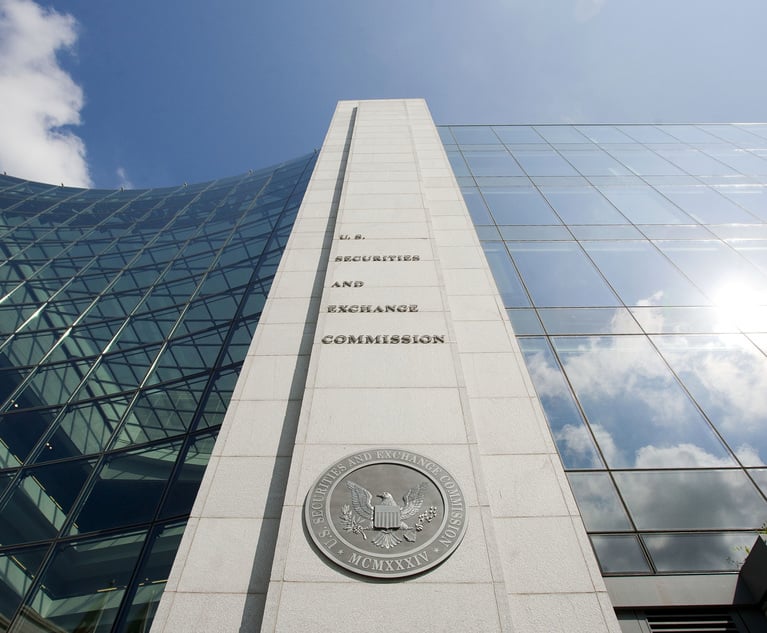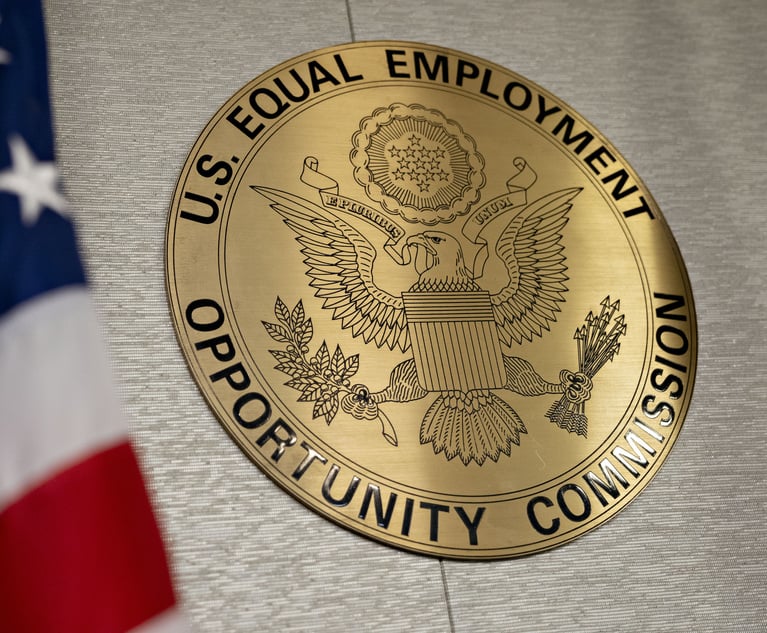Level Playing Field
China's government strips foreign companies of preferential tax treatment.
May 31, 2007 at 08:00 PM
6 minute read
As difficult as it may be for foreign investors to believe, China's newly enacted unified Enterprise Income Tax Law, which strips preferential tax treatment from foreign investment enterprises (FIE), may actually have a silver lining.
“Foreign investors will have an additional tax burden of $4 billion to $5 billion dollars,” says Bob Kwauk, managing partner of Blake Cassels & Graydon's Beijing office. “But that will be offset by the creation of a unified tax regime that is a critical factor in attracting foreign direct investment. It also creates a system that is more stable, more transparent and more predictable with much less scope for government tinkering than there was before.”
Announced in mid-March, the new law takes effect Jan. 1, 2008. It will replace what Kwauk estimates is the maze of about 3,000 existing laws, regulations, circulars and interpretation bulletins that make up the current regime.
There is also little in the new regime that is a real surprise to the international investing community. “Although many people believed this law was coming a lot earlier, the unified tax rate of 25 percent that the government set has been a number that we've bandied about widely for some time,” Kwauk says.
But still, the new regime mandates a fresh approach to FIEs' business models.
“Companies will have to rethink their investment structures and financing and will need to focus more on global tax strategies and international tax-planning tools,” says Hans-Gunther Herrmann, counsel with Paul Weiss Rifkind Wharton & Garrison's Hong Kong office.
But to do so, they'll need an intimate knowledge of the changes. From all appearances, tax law in China is going to be no less complex than what U.S. companies are accustomed to at home.
Phased Approach
Before the new law, Chinese domestic companies paid income tax at an average effective rate of 25 percent (the nominal rate was 33 percent) while FIEs enjoyed preferential status that produced a 15 percent effective rate. Incentives and rules governing the deductibility of costs also differed between domestic and foreign companies.
By contrast, the new law subjects all businesses to a nominal tax rate of 25 percent and creates identical eligibility for incentives and identical rules governing the calculation of income and expenses.
“The net result is that the government will lose about $12 billion in revenue overall because while foreign companies will be paying more, domestic companies will be paying less,” Kwauk says.
The change will not come all at once. To begin with, the government will phase in the new tax rate over five years, adding 2 percent to the rate each year. The new law also contains a “grandfather” clause that allows incentives for previously approved projects to continue until 2012.
By way of example, China typically granted manufacturing FIEs a two-year tax holiday beginning in the first year in which they turned a profit and a 50 percent reduction in the tax rate for the subsequent three years. If a company's first year of profit occurs in 2008 or earlier, then it will enjoy the full benefit of the original incentive. If profits come later, the new law effectively reduces the incentive period by deeming it to have commenced in the 2008 taxation year.
On the expense side, FIEs will lose the advantages they have enjoyed over Chinese companies. The previous regime capped wage deductions for Chinese companies at 1,600 yuan (about $207) per employee per month. The government also capped deductions Chinese companies could take for advertising costs and charitable donations. Any amount paid above the stipulated limits was not deductible, even as FIEs could deduct the full sum of these expenses.
While the expense rules for FIEs won't change, Chinese companies will enjoy the same deductions under the new law.
The extent to which domestic companies expect these changes will put them on a more competitive footing with their foreign rivals is evident: both the Bank of China as well as the Industrial and Commercial Bank of China already have approval from the State Administration of Taxation to raise their wage-deduction threshold.
Promoting Growth
This doesn't mean, however, that the new law is devoid of tax incentives; rather, the incentives will be available on an equal footing to FIEs and domestic companies. This makes it all the more important that FIEs that want to remain competitive under the new law understand these incentives thoroughly.
China's historical approach to tax policy has emphasized tax holidays and rate reductions for FIE manufacturing concerns and for FIEs operating in designated “special economic zones.” By contrast, the new law represents a distinct shift away from “special economic zones” to encouraging growth of high-priority industry sectors regardless of their locations or whether the taxpayer is a Chinese company or an FIE.
“One of the new law's main purposes is to promote the direction of China's economic growth,” Herrmann says.
In 2006 the government announced that its long-term national growth strategy was to focus on “innovation and technological advancement.” As a result, experts predict sectors that will benefit from tax incentives–such as tax holidays and rate reductions–will include high-tech sectors such as biotech and aerospace, labor-intensive service industries and the agricultural sector.
“Job creation is a priority for the Chinese government,” Kwauk says. “The worst thing that can happen to it politically is to have a whole lot of educated but underemployed people.”
The government also will use tax incentives to encourage enterprises involved in energy and water-saving ventures, environmental protection and industrial safety.
Whether these incentives are enough to counteract the negative impact that the tax hikes could have on direct foreign investment remains to be seen. But some observers note that foreigners have no real cause for complaint.
Resetting the Balance
“FIEs have only their own governments to blame for the tax changes and particularly the tax increase,” Kwauk says.
He and others point out that both the U.S. and the EU have been blaming their trade deficits with China on what they call the government's indirect subsidies of exports through tax incentives to FIEs. In 2000, the U.S. had a negative trade balance with China of $84 billion. In 2006 that trade balance stood at $232 billion. And in just the first two months of 2007, the U.S. racked up a negative balance of nearly $39 billion.
“Foreign companies account for no more than 20 percent of all investment in China, yet they account for 60 percent of China's exports,” Kwauk says.
Still, Kwauk maintains that the end of preferential treatment for FIEs should not make China a less attractive place to invest. “The tax changes are offset by measures the Chinese government has taken to breed greater transparency, an improving infrastructure, and the acceleration of consumer consumption power,” he says.
This content has been archived. It is available through our partners, LexisNexis® and Bloomberg Law.
To view this content, please continue to their sites.
Not a Lexis Subscriber?
Subscribe Now
Not a Bloomberg Law Subscriber?
Subscribe Now
NOT FOR REPRINT
© 2025 ALM Global, LLC, All Rights Reserved. Request academic re-use from www.copyright.com. All other uses, submit a request to [email protected]. For more information visit Asset & Logo Licensing.
You Might Like
View All

‘Extremely Disturbing’: AI Firms Face Class Action by ‘Taskers’ Exposed to Traumatic Content
5 minute read
In-House Lawyers Are Focused on Employment and Cybersecurity Disputes, But Looking Out for Conflict Over AI
Trending Stories
- 1Decision of the Day: Judge Dismisses Defamation Suit by New York Philharmonic Oboist Accused of Sexual Misconduct
- 2California Court Denies Apple's Motion to Strike Allegations in Gender Bias Class Action
- 3US DOJ Threatens to Prosecute Local Officials Who Don't Aid Immigration Enforcement
- 4Kirkland Is Entering a New Market. Will Its Rates Get a Warm Welcome?
- 5African Law Firm Investigated Over ‘AI-Generated’ Case References
Who Got The Work
J. Brugh Lower of Gibbons has entered an appearance for industrial equipment supplier Devco Corporation in a pending trademark infringement lawsuit. The suit, accusing the defendant of selling knock-off Graco products, was filed Dec. 18 in New Jersey District Court by Rivkin Radler on behalf of Graco Inc. and Graco Minnesota. The case, assigned to U.S. District Judge Zahid N. Quraishi, is 3:24-cv-11294, Graco Inc. et al v. Devco Corporation.
Who Got The Work
Rebecca Maller-Stein and Kent A. Yalowitz of Arnold & Porter Kaye Scholer have entered their appearances for Hanaco Venture Capital and its executives, Lior Prosor and David Frankel, in a pending securities lawsuit. The action, filed on Dec. 24 in New York Southern District Court by Zell, Aron & Co. on behalf of Goldeneye Advisors, accuses the defendants of negligently and fraudulently managing the plaintiff's $1 million investment. The case, assigned to U.S. District Judge Vernon S. Broderick, is 1:24-cv-09918, Goldeneye Advisors, LLC v. Hanaco Venture Capital, Ltd. et al.
Who Got The Work
Attorneys from A&O Shearman has stepped in as defense counsel for Toronto-Dominion Bank and other defendants in a pending securities class action. The suit, filed Dec. 11 in New York Southern District Court by Bleichmar Fonti & Auld, accuses the defendants of concealing the bank's 'pervasive' deficiencies in regards to its compliance with the Bank Secrecy Act and the quality of its anti-money laundering controls. The case, assigned to U.S. District Judge Arun Subramanian, is 1:24-cv-09445, Gonzalez v. The Toronto-Dominion Bank et al.
Who Got The Work
Crown Castle International, a Pennsylvania company providing shared communications infrastructure, has turned to Luke D. Wolf of Gordon Rees Scully Mansukhani to fend off a pending breach-of-contract lawsuit. The court action, filed Nov. 25 in Michigan Eastern District Court by Hooper Hathaway PC on behalf of The Town Residences LLC, accuses Crown Castle of failing to transfer approximately $30,000 in utility payments from T-Mobile in breach of a roof-top lease and assignment agreement. The case, assigned to U.S. District Judge Susan K. Declercq, is 2:24-cv-13131, The Town Residences LLC v. T-Mobile US, Inc. et al.
Who Got The Work
Wilfred P. Coronato and Daniel M. Schwartz of McCarter & English have stepped in as defense counsel to Electrolux Home Products Inc. in a pending product liability lawsuit. The court action, filed Nov. 26 in New York Eastern District Court by Poulos Lopiccolo PC and Nagel Rice LLP on behalf of David Stern, alleges that the defendant's refrigerators’ drawers and shelving repeatedly break and fall apart within months after purchase. The case, assigned to U.S. District Judge Joan M. Azrack, is 2:24-cv-08204, Stern v. Electrolux Home Products, Inc.
Featured Firms
Law Offices of Gary Martin Hays & Associates, P.C.
(470) 294-1674
Law Offices of Mark E. Salomone
(857) 444-6468
Smith & Hassler
(713) 739-1250







